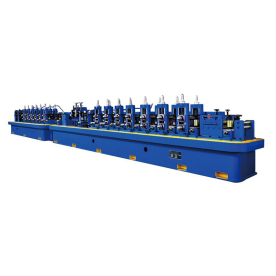[Annealing machine]Exploring the Role of Annealing Machines in Modern Manufacturing: Enhancing Material Properties for Superior Product Performance
News 2024-9-3
When it comes to modern manufacturing processes, the significance of annealing cannot be overstated. The process itself has roots that can be traced back hundreds of years, but it has continually evolved with advancements in technology and an increasing demand for high-quality materials. At the heart of this vital process lies the annealing machine, a piece of equipment that plays a crucial role in enhancing the properties of metals and alloys, ensuring they meet the specific requirements of various applications. This article will delve into the function of annealing machines, their benefits, and the different types used in industry today.
First and foremost, it is essential to understand what annealing is. Annealing is a heat treatment process used primarily to alter the physical and sometimes chemical properties of a material, making it softer and more workable. The primary goals of annealing include relieving internal stresses, refining the grain structure, reducing hardness, and improving ductility. This transformation can be achieved through controlled heating and cooling cycles, allowing manufacturers to tailor materials for specific uses in sectors such as automotive, aerospace, electronics, and construction.
The annealing machine is designed to facilitate this controlled heating and cooling process. At its core, an annealing machine is a furnace that can reach high temperatures, allowing materials to be heated uniformly. These machines can vary widely in design and function, depending on the specific needs of the application. Variants include batch annealing furnaces, continuous annealing lines, and vacuum annealing furnaces, each serving unique roles in production environments.
Batch annealing furnaces are typically used for smaller quantities of material, where parts are loaded into the furnace at once and subjected to a specific thermal cycle. This type of annealing is often beneficial for materials that require more delicate control over the heating process, as it allows for better monitoring of individual pieces.

Exploring the Role of Annealing Machines in Modern Manufacturing: Enhancing Material Properties for Superior Product Performance

Exploring the Role of Annealing Machines in Modern Manufacturing: Enhancing Material Properties for Superior Product Performance
The benefits of using annealing machines are substantial. Manufacturers who incorporate annealing into their processes can produce materials with improved mechanical properties, such as increased ductility, toughness, and even corrosion resistance. For example, steel that undergoes annealing becomes less brittle in comparison to its untreated counterpart, making it more suitable for applications that require bending or forming.

Exploring the Role of Annealing Machines in Modern Manufacturing: Enhancing Material Properties for Superior Product Performance
Additionally, annealing plays a role in energy management. A well-tuned annealing process can lead to the optimization of energy expenditure, as maintaining precise temperature control reduces unnecessary fuel consumption. This not only results in financial savings for manufacturers but also aligns with broader sustainability goals by lowering the carbon footprint associated with production.
In conclusion, annealing machines are indispensable tools in modern manufacturing, enabling the optimization of metal and alloy properties to meet specific application demands. By facilitating controlled heating and cooling cycles, these machines enhance material performance, extending service life and improving product quality. As technologies evolve and industries continue to push for higher standards, the role of annealing machines will undoubtedly remain critical in supporting the demands of contemporary manufacturing. Whether it’s through batch processes, continuous lines, or vacuum systems, leveraging the full potential of annealing can lead to significant advancements across multiple sectors.
